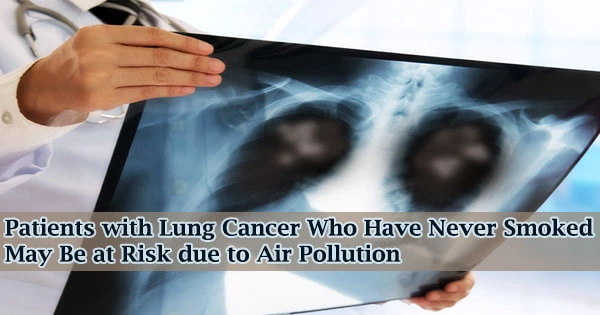Researchers from Vancouver, British Columbia, investigate the relationship between the length of prior air pollution exposure and the diagnosis of lung cancer.
It may take 15 to 20 years for the effects of air pollution exposure to be reflected in the incidence rate of lung adenocarcinoma, according to the International Agency for Research on Cancer’s 2013 classification of outdoor air pollution and particulate matter of 2.5 micrograms/meter3 (PM 2.5) in outdoor air pollution as carcinogenic to humans.
Renelle Myers, BC Cancer, Vancouver, B.C., evaluated the cumulative three-year versus 20-year exposure in females with newly diagnosed lung cancer who have never smoked in order to evaluate the relationship between pollution and lung cancer diagnosis.
Women with lung cancer in the Vancouver region who had never smoked were invited to take part in the study by Dr. Myers and her associates.
The patient’s age, sex, race, country of birth, age at which they arrived in Canada (for foreign-born Canadians), occupation, history of lung cancer in the family, and exposure to secondhand smoke were all carefully recorded by the researchers.
For both current residences in Canada and former residences outside of Canada (for immigrants who were born abroad), a thorough residential history from birth to cancer diagnosis was kept. This spatial information comprised street and city addresses as well as postal codes, allowing precise linkage of residential sites to data on PM 2.5 exposure acquired from satellites starting in 1996.
Our study demonstrates the important of incorporating long-term cumulative exposure to ambient air pollutants in the assessment of individual lung cancer risk in combination with traditional risk factors. Research is needed regarding the best method to incorporate the effects of air pollution exposure prior to 1996 when accurate satellite data became available. Our finding has important clinical implication in assessing lung cancer risk with global migration.
Dr. Renelle Myers
A high-spatial-resolution global exposure model was used to quantify cumulative PM 2.5 exposure. We evaluated the impact of exposure over three years versus 20 years.
Even a 20-year cumulative exposure, according to Myers, is an underestimate of lifetime exposure and relies on the country of residence. It also does not account for childhood exposure.
190 (83.3%) of the 236 female lung cancer patients who had never smoked were foreign-born, and 71% of them were Asian. The average number of years spent abroad was 37.3.
The average age at diagnosis for lung cancer was 66 years; 92.8% of those diagnosed had adenocarcinoma, and 55.9% had stage III or IV disease. Only 4/190 (2%) of Canadian girls who were born abroad had a 3-year cumulative PM2.5 exposure of greater than >10 ug/m3, while 38/190 (20%) had a 20-year cumulative PM2.5 exposure of greater than >10 ug/m3 (p≥0.0001).
They were all exposed to more than 5 ug/m3 of PM2.5. The cumulative exposure to PM2.5 before a lung cancer diagnosis is dramatically underestimated in shorter-term (3-year) assessments, particularly among Canadians of foreign birth.
“Our study demonstrates the important of incorporating long-term cumulative exposure to ambient air pollutants in the assessment of individual lung cancer risk in combination with traditional risk factors,” said Dr. Myers. “Research is needed regarding the best method to incorporate the effects of air pollution exposure prior to 1996 when accurate satellite data became available. Our finding has important clinical implication in assessing lung cancer risk with global migration.”





